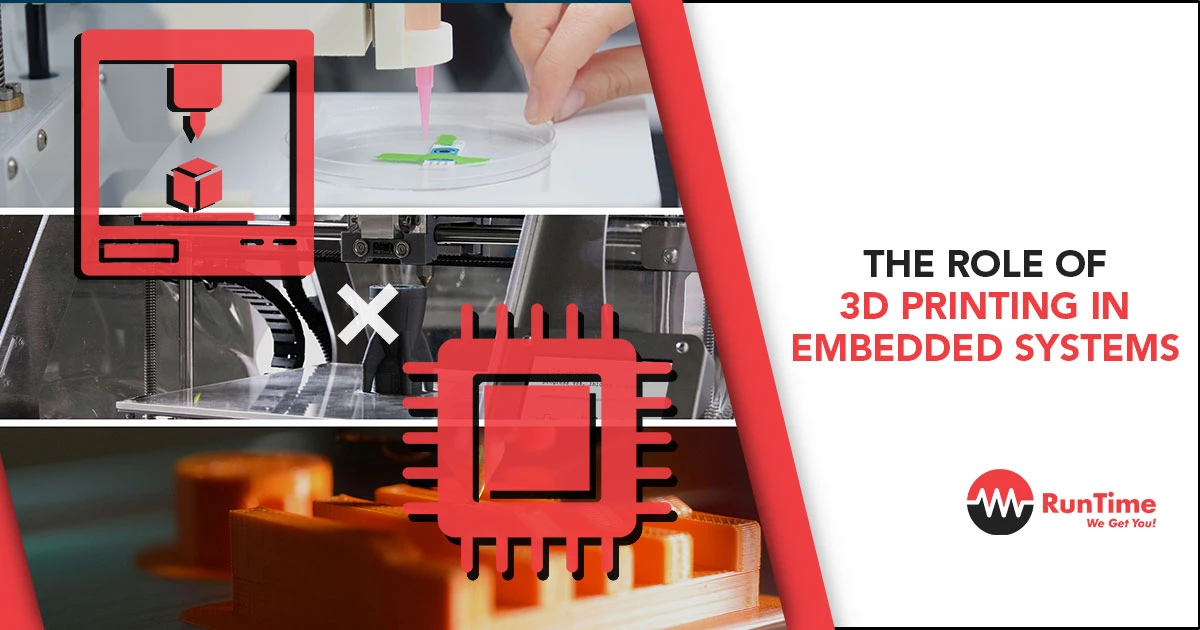The confluence of 3D printing and embedded systems is an exciting development that is changing the game for innovation, efficiency, and customization. It’s not just a passing trend, but a major shift that will transform the way we design, prototype, and manufacture devices with embedded systems.
For those of us in the embedded industry, it’s important to stay up-to-date on the latest advances and understand how they can benefit our work. That’s why I wanted to provide a comprehensive look at the role of 3D printing in this domain and explore how 3D printing is revolutionizing the world of embedded systems.
Understanding the Synergy
Embedded systems are computer systems that perform a specific function within a larger mechanical or electrical system. They are everywhere around us, from home appliances to industrial and automotive systems. By integrating 3D printing or additive manufacturing into the development process of embedded systems, we can enjoy numerous benefits such as faster development time, increased customization, and the ability to create complex geometries that were previously difficult or impossible to produce using traditional manufacturing methods.
Accelerated Prototyping and Development
One of the most significant benefits of 3D printing in the field of embedded systems is the substantial acceleration of the prototyping phase. Traditional prototyping methods can be time-consuming and expensive, particularly when dealing with complex components that require precision manufacturing. With 3D printing, engineers can quickly iterate designs, testing and refining the functionality of embedded systems in a fraction of the time. This agility in development speeds up the research and development process and enables a more experimental approach to design, promoting innovation.
Customization at Scale
The versatility of 3D printing technology is highly advantageous when it comes to manufacturing customized components for embedded systems. In industries like healthcare, aerospace, and automobile, where bespoke solutions are of utmost importance, 3D printing allows the production of parts that are tailor-made to meet the unique requirements of each application, without the need for expensive molds or tooling. This capability to customize at scale is particularly beneficial in small-batch production or applications where individualization is critical to achieve optimal performance or user experience.
Complex Geometries and Material Diversity
Embedded systems often require components with complex geometries to efficiently house electronic circuits, sensors, and connectors. 3D printing is a highly precise method of creating intricate designs that excel in this area. Additionally, the expanding range of materials now suitable for 3D printing, including conductive filaments, metals, and polymers, allows for a broader spectrum of applications. This means that engineers can now design embedded systems with specific material properties in mind, such as electrical conductivity, heat resistance, or mechanical strength, opening up new possibilities for integrated and multifunctional components.
Challenges and Considerations
Although 3D printing for embedded systems offers significant benefits, certain challenges and considerations need to be taken into account. The accuracy and reliability of printed components can vary depending on the printing technology and material utilized, which requires careful validation to ensure they meet the stringent requirements of embedded systems. Additionally, while the cost of prototyping may be reduced, the cost-effectiveness of 3D printing for mass production compared to traditional manufacturing methods can vary based on the complexity and volume of parts being produced.
The Road Ahead
The field of embedding systems has seen dynamic advancements with the integration of 3D printing technology, which has led to the use of better printing technologies, materials, and software. As these technologies continue to develop, we can expect to see more extensive adoption and advanced applications of 3D printing in embedded systems. Professionals need to stay informed about the latest developments, understand the capabilities and limitations of 3D printing, and consider how additive manufacturing can be strategically applied to meet the unique requirements of their projects.
Final Word
The field of embedded systems can benefit greatly from the use of 3D printing technology. It offers a wide range of tools that can be used for rapid prototyping, customization, and the creation of complex components. This can help engineers and designers push the limits of what is possible, creating more sophisticated, efficient, and tailored embedded systems. As we look towards the future, the role of 3D printing in this field is poised for growth, highlighting the importance of a pragmatic and well-informed approach to harnessing this technology.
Hire the Best Engineers with RunTime Recruitment
If you’re searching for highly skilled engineers worldwide, our expert team of engineers-turned-recruiters is here to help you. We offer in-depth knowledge of technical recruiting in the engineering industry to make the sourcing process much easier for you.
On the other hand, if you’re an engineer looking for new opportunities, RunTime Recruitment’s job site is the perfect place to find job vacancies.









